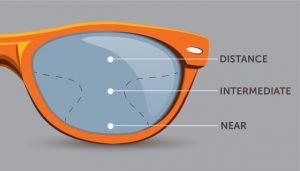Thanks to our busy lives, multiple hobbies, and all the activities in between, having multiple pairs of eyewear handy is a necessity. Even contact lens wearers should have alternative pairs of eyewear. But some of us still haven’t jumped on that bandwagon. If you’re still on the fence, here are a few reasons why it’s a great idea to have at least two pairs of eyewear:
Misplacement
We’ve all been there, searching for missing glasses just when we need them the most. An additional pair of eyewear can’t guarantee they won’t keep slipping through the cracks, but it will significantly reduce the chances of having to go without. Lost a contact lens and don’t have a replacement? Backup glasses can hold you over until your new contact lenses come in!
Style
Think about it: a night out on the town is going to call for more stylish eyewear than the amber-tinted lenses you wear at your computer desk. Funky frames may better showcase your personality, but a more neutral pair may be needed for professional situations. Having different styles of glasses removes this dilemma by giving you situation-specific options.
Protection
Chances are, your standard glasses aren’t going to adapt and darken in reaction to sunlight (unless you have photochromic lenses), so it only makes sense to invest in a pair of prescription sunglasses to protect your eyes. Polarized lenses are a good option, especially since the tint can be tailored to your specific sport or hobby.
Contact Lens Wearers
Plano sunwear is a must have for all contact lens users. Contact lenses do not protect your eyes from the harmful UV rays of the sun. We recommend plano sunwear that blocks 100% of UV rays for anyone who wears contacts.
Schedule an appointment with our office if you’re interested in investing in a second pair of glasses! We will help you find the best frames and lenses for your lifestyle!


